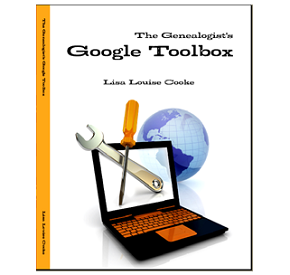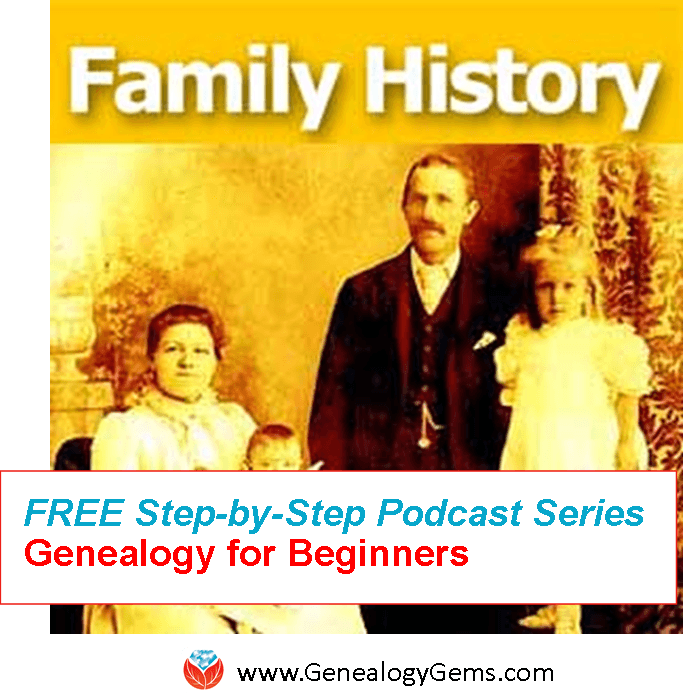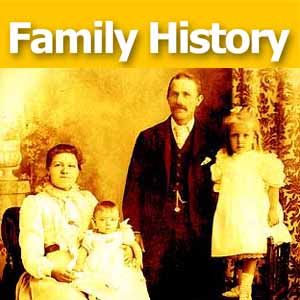by Lisa Cooke | Jun 11, 2015 | 01 What's New, African-American, Ancestry, Beginner, Census, FamilySearch, History, images, Records & databases, Research Skills, United States

Sample census detail image from Ancestry.com.
Imagine taking a standard U.S. census form, translating it into Spanish, administering it to a newly-American population whose racial identity is highly politicized, translating the results back into English and trying to make sense of them 100 years later.
That’s what happens when you’re looking at 1910 census in Puerto Rico.
I stumbled on this story when my dad, a FamilySearch indexer, called my attention to a current project to index previously-missed parts of the 1910 census. A lot of the missing data was for Puerto Rico. The forms are in Spanish. My dad asked my help translating some of what he was reading, since I speak some Spanish. He was concerned that the computer was interpreting some of the abbreviations in English when they were likely Spanish abbreviations. I looked into it and what I found reminded me of these lessons:

From “The US Census and the Contested Rules of Racial Classification in Early Twentieth-Century Puerto Rico,” by Mara Loveman, in Caribbean Studies, 35:2 (July-Dec 2007), 3-36. Click image to go to the paper.
Always read the record itself and seek to understand it. Don’t just rely on the index! The published images of this census on Ancestry interpret “B” in the race column as “Black,” but a little research (thank you, Google Scholar!) reveals that the census takers entered the race in Spanish–so “B” was for “blanco” (read about it in this academic paper).
When you see someone’s race change over the course of a lifetime, consider the historical context. Puerto Rican census data from the early 1900s “show a population becoming significantly whiter from one census to the next” because of “changes in how race was classified on census returns,” says the same paper. Not only were there changes in the official instructions, but the enumerators increasingly didn’t follow them. In fact, on several thousand census entries in 1910 and even more in 1920, “individuals’ racial classifications were manually crossed out, and a different ‘race’ was written in. These post-enumeration edits, it turns out, were done by a select group of Puerto Ricans hired to supervise and ‘correct’ the work of fellow Puerto Rican enumerators.”
 This little historical trivia is not so trivial if you’re wondering why your ancestor may be identified by a different race than you expected. Learn more about finding academic papers like the one quoted here in The Genealogist’s Google Toolbox by Lisa Louise Cooke. Her book shows you how to search Google Scholar for gems like this that make your family history more clear!
This little historical trivia is not so trivial if you’re wondering why your ancestor may be identified by a different race than you expected. Learn more about finding academic papers like the one quoted here in The Genealogist’s Google Toolbox by Lisa Louise Cooke. Her book shows you how to search Google Scholar for gems like this that make your family history more clear!
by Lisa Cooke | Apr 3, 2012 | Census, Research Skills
It’s not every day that a new record group becomes available that will help you learn more about your family history. But yesterday, April 2, 2012 was one of those special days! Who will you be looking for? Do you plan on volunteering to help with indexing?
National Archives Releases 1940 Census
Washington, D.C. . . Ever wondered where your family lived before WWII; whether they owned their home; if they ever attended high school or college; if they were born in the United States, and if not, where? Unlocking family mysteries and filling in the blanks about family lore became much easier today with the release of the 1940 census by the National Archives and Records Administration. By law the information on individuals in the decennial censuses, which is mandated by the U.S. Constitution, is locked away for 72 years.

In a 9 A.M. ceremony in the William G. McGowan Theater, Archivist of the United States David S. Ferriero declared the 1940 census officially open. This is the 16th decennial census, marking the 150th anniversary of the census. Performing the first search, Mr. Ferriero said, “It is very exciting for families across America to have access to this wealth of material about the 1930s. Many of us will be discovering relatives and older family members that we didn’t know we had, picking up threads of information that we thought were lost, and opening a window into the past that until now has been obscured We now have access to a street-level view of a country in the grips of a depression and on the brink of global war.”
Dr. Robert Groves, Director of the U.S. Census Bureau added: “Releasing census records is an odd event for us; we spend all our lives keeping the data we collect confidential. However, once every 10 years, we work with the National Archives and Records Administration to release 72-year old census records that illuminate our past. We know how valuable these records are to genealogists and think of their release as another way to serve the American public.”
For the first time, the National Archives is releasing an official decennial census online. The 3.9 million images constitute the largest collection of digital information ever released by the National Archives. The free official website http://1940census.archives.gov/, hosted by Archives.com, includes a database of Americans living within the existing 48 states and 6 territories on April 2, 1940.
“There is a great synergy between the National Archives and Archives.com stemming from our passion to bring history online,” said John Spottiswood, Vice President, Business Development, Archives.com. He continued, “It has been a tremendous opportunity to work with the National Archives to bring the 1940 census to millions of people, the most anticipated record collection in a decade. In a short period, we’ve built a robust website that allows people to browse, share, print, and download census images. We encourage all to visit 1940census.archives.gov to get started on their family history!”
The census database released today includes an index searchable at the enumeration district level. An enumeration district is an area that a census taker could cover in two weeks in an urban area and one month in a rural area.
To make the search for information easier, the National Archives has joined a consortium of groups to create a name-based index. Leading this effort, FamilySearch is recruiting as many as 300,000 volunteers to enter names into a central database.
Questions asked in the 1940 census, which reflect the dislocation of the Great Depression of the 1930s, will yield important information not only for family historians and genealogists, but also for demographers and social and economic historians. We learn not only if a family owned or rented their home, but the value of their home or their monthly rent. We can find lists of persons living in the home at the time of the census, their names, ages and relationship to the head of household. For the first time the census asked where a family was living five years earlier: on April 1, 1935. This information might offer clues to migration patterns caused by the Dust Bowl and the Great Depression. For the first time in the census, a question relating to wages and salary was asked. Persons 14 years old and over were asked questions regarding their employment status: Were they working for pay or profit in private or nonemergency government work during the week of March 24–March 30, 1940? Were they seeking work? How many hours did they work during the last week of March? How many weeks did they work in 1939? What was their occupation and in what industry?
by Lisa Cooke | Sep 2, 2015 | 01 What's New, Ancestry, Brick Wall, Census, images, Records & databases, United States
 The 1915 New Jersey State Census was recently released on FamilySearch. What a great opportunity to remind everyone about valuable U.S. state-level censuses taken between federal censuses.
The 1915 New Jersey State Census was recently released on FamilySearch. What a great opportunity to remind everyone about valuable U.S. state-level censuses taken between federal censuses.
Along with everyone who has U.S. roots, we love the federal census! We just wish there were more of them. Well, we can’t go back in time and make the federal government take more censuses. But we CAN turn to the many state census records.

 In State Census Records
In State Census Records , author Ann S. Lainhart tells us 3 reasons for seeking out state censuses (and colonial and territorial censuses that preceded them):
, author Ann S. Lainhart tells us 3 reasons for seeking out state censuses (and colonial and territorial censuses that preceded them):
- They fill in gaps between federal censuses, and particularly the long gap left by the missing 1890 census.
- They may not be closed to the public for as long.
- Different questions may have been asked than on the federal census.
For example, FamilySearch just announced that it’s added more than 2.7 million records from the 1915 New Jersey Census to its free online collections. “New Jersey records…was a popular settling point for millions of immigrants during the heyday of US immigration from 1892 to 1924,” states a press release. These records include “the names of each member of the household, location, gender, birth date (month and year) and birthplace.” New Jersey took censuses every 10 years from 1855 to 1915: FamilySearch has 1885 and 1905; 1895 is at Ancestry.
Actually, MOST U.S. states took some kind of census in the past. Ancestry’s wiki has a full list of U.S. colonial, state and territorial censuses. A lot of these are online at Ancestry and/or FamilySearch; a Google search of the state, year and “census” will lead you to these.
Resources
Census Records series in Episodes 9-11 of the free Family History Made Easy podcast
A Surprising Lesson on Using Census Records for Genealogy
1950 Census Substitutes: What to Use Until its Release Date
 Thank you for sharing this post with others who may want to know more about state census records!
Thank you for sharing this post with others who may want to know more about state census records!
by Lisa Cooke | Dec 17, 2013 | 01 What's New, African-American, Ancestry, Census, Family History Podcast, FamilySearch

Listen to the Family History: Genealogy Made Easy podcast by Lisa Louise Cooke. It’s a great series for learning the research ropes and well as refreshing your skills.
Originally published 2009
Republished December 17, 2013
[display_podcast]
Download the Show Notes for this Episode
Welcome to this step-by-step series for beginning genealogists—and more experienced ones who want to brush up or learn something new. I first ran this series in 2008-09. So many people have asked about it, I’m bringing it back in weekly segments.
Episode 11: Census Wrap-Up: Decade-by-Decade to 1790
In our first segment we welcome back genealogy researcher, author and lecturer Lisa Alzo. The author of Three Slovak Women, Baba’s Kitchen and Finding Your Slovak Ancestors talks about discovering family traits and putting them in perspective.
Then in our second segment we wrap up our three-episode coverage of U.S. census records with a decade-by-decade overview of censuses from 1880 back to 1790. We talk about special schedules taken during one or more censuses: mortality, slave, social statistics and supplemental, agricultural, manufacturing and the DDD (Defective, Dependent and Delinquent) schedules.
Updates and Links
For a list of online resources for U.S. federal census data, check out the show notes for Episode 9 at http://tinyurl.com/ShowNotesEp9. More links you’ll want for this episode include:
by Lisa Cooke | Dec 3, 2013 | 01 What's New, Census, Family History Podcast
 Originally published Fall 2008
Originally published Fall 2008
Republished Dec. 3, 2013
[display_podcast]
Download the Show Notes for this Episode
Welcome to this step-by-step series for beginning genealogists—and more experienced ones who want to brush up or learn something new. I first ran this series in 2008. So many people have asked about it, I’m bringing it back in weekly segments.
Episode 9: Using Census Records
In this episode we start off by talking about a group of records critical to family history research in my home country: U.S. Federal Census Records. You’ll learn not only what to find in the regular schedules, but about the enumerators, the instructions they followed, and special sections like the economic census.
Then in our second segment we go straight to the source: Bill Maury, Chief of History Staff at the U.S. Census Bureau. I’ll be talking to him about the History section of the Census Department’s website. Note the updated Genealogy tab on the site, as well as the Through the Decades tab, which is packed with historical information for each census.
Updates
Since the show first aired, the 1940 U.S. Census has become publicly available. This was the largest, most comprehensive census taken, with over 132 million names of those known as the “greatest generation.” Full indexes and images are available at several sites. Your first stop should be the National Archives’ official 1940 census website to learn about the census itself. Then search it at your favorite genealogy data site in one of the links below.
Finally, I gave you specific instructions in the podcast on searching the 1930 U.S. Census online at Ancestry.com. To specifically search any of the U.S. censuses (or any other record collection) at Ancestry.com, go to the Search tab and select Card Catalog. You’ll see several censuses among the options they give you, or you can enter keywords like “1940 census.”
Links
Search U.S. censuses online at:
Ancestry.com
Archives.com
FamilySearch.org
findmypast.com
worldvitalrecords.com
OR Learn more about researching from microfilm at the National Archives website.
Page 3 of 101«12345...102030...»Last »

 This little historical trivia is not so trivial if you’re wondering why your ancestor may be identified by a different race than you expected. Learn more about finding academic papers like the one quoted here in The Genealogist’s Google Toolbox by Lisa Louise Cooke. Her book shows you how to search Google Scholar for gems like this that make your family history more clear!
This little historical trivia is not so trivial if you’re wondering why your ancestor may be identified by a different race than you expected. Learn more about finding academic papers like the one quoted here in The Genealogist’s Google Toolbox by Lisa Louise Cooke. Her book shows you how to search Google Scholar for gems like this that make your family history more clear!










